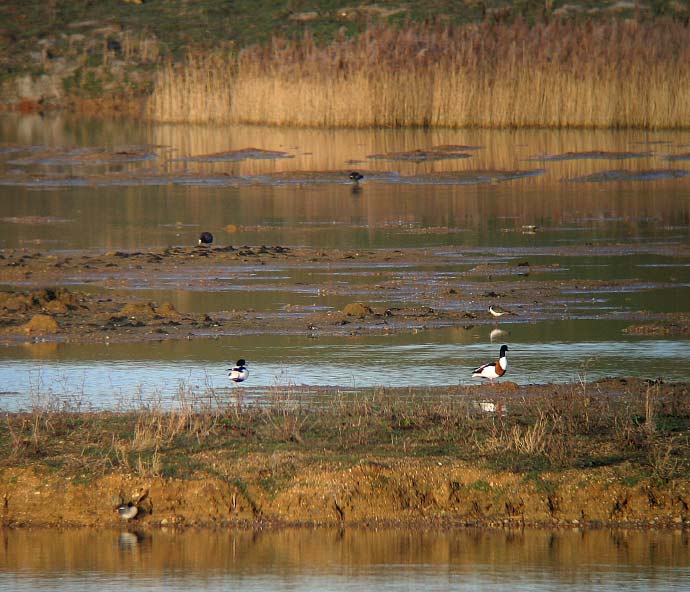
Maxey pits (between Etton and Maxey, north of Peterborough) are looking juicy. After last spring's landscaping, scraping, flooding and tree planting, I feared for the site (which has been a good Little Ringed Plover breeding area for the last few years). By the autumn, it was pulling in Pectoral Sandpipers, by Christmas it had attracted at least nine 'elite'* wader species during the year (Turnstone, Curlew, Bar-tailed Godwit, Spotted Redshank, Little Stint, Knot, Sanderling, Pectoral Sandpiper and Grey Plover plus a possible American Golden Plover).
This spring it has matured nicely and is surely going to attract some goodies. Luckily, the sapling trees in their tubes are going to grow very slowly and certainly won't be impeding viewing from the excellent hardstand on the Etton road. At the mo, it is probably the most easily visible good passage wader habitat in the Peterborough area. And I love waders, and it is less than 15 minutes from home.
So, I intend to visit the site on at least three mornings during the week to see how spirng develops, and report the changes here when I get back each morning, before work. The only trouble with morning visits here, is that some stuff definitely comes in during the day (last autumn a couple of Spotted Redshanks spent the day here but roosted miles away, perhaps near the Nene Washes; so they wouldn't come back until the morning was getting on a bit).
This morning (on a frosty, clear and lovely day) the site was dominated by the bubbling repetitious song of a Ringed Plover, one of at least two pairs which are seemingly intending to breed. The Lapwings are also showing signs of breeding, with nest scraping going on in the gravel. I counted 85 Teal here at the weekend, and nearly all of them are notably paired. Also paired are at least four pairs of Shelduck. Last year a pair raised eight ducklings.
13.3.07 6.50-7.25am Maxey pits
Little Grebe, 2 at least, (whinnying and presumably settling to breed),
Mute Swan, 3, (two adults and a last year's bird),
Tufted Duck, c20, predominantly drakes together, plus scattered pairs and birds
Gadwall, 2, (1 pair)
Shelduck, 8, (4 pairs)
Ringed Plover, 4, (2 pairs, one bird singing repeatedly while perched on a cobble)
Green Sandpiper, 1, flew in just as I was leaving,
Lapwing, c20 present, with one or two looking to scrape out 'nests' in the gravel,
Teal, 65, mostly paired (others hidden),
Green Woodpecker, one calling in distance,
Sky Lark, a few pairs are establishing territories in the rough ground, including one singing very close ot hardstand,
White Wagtail, 1, (one was recorded at Baston & Langtoft pits New Workings on 12.3.06),
Pied Wagtail, 3,
Meadow Pipit, a few calling overhead,
Yellowhammer, a few calling from the hedge along the road.
*'elite' is a word I use to describe birds in the Peterborough area (the PBC recording area) which are not readily seen by the average birder without a bit of luck, extra effort a bit of twitching or extra skill. The rest, some 135 species are the 'core'.
1 comment:
Urrrrrghhh!
Post a Comment